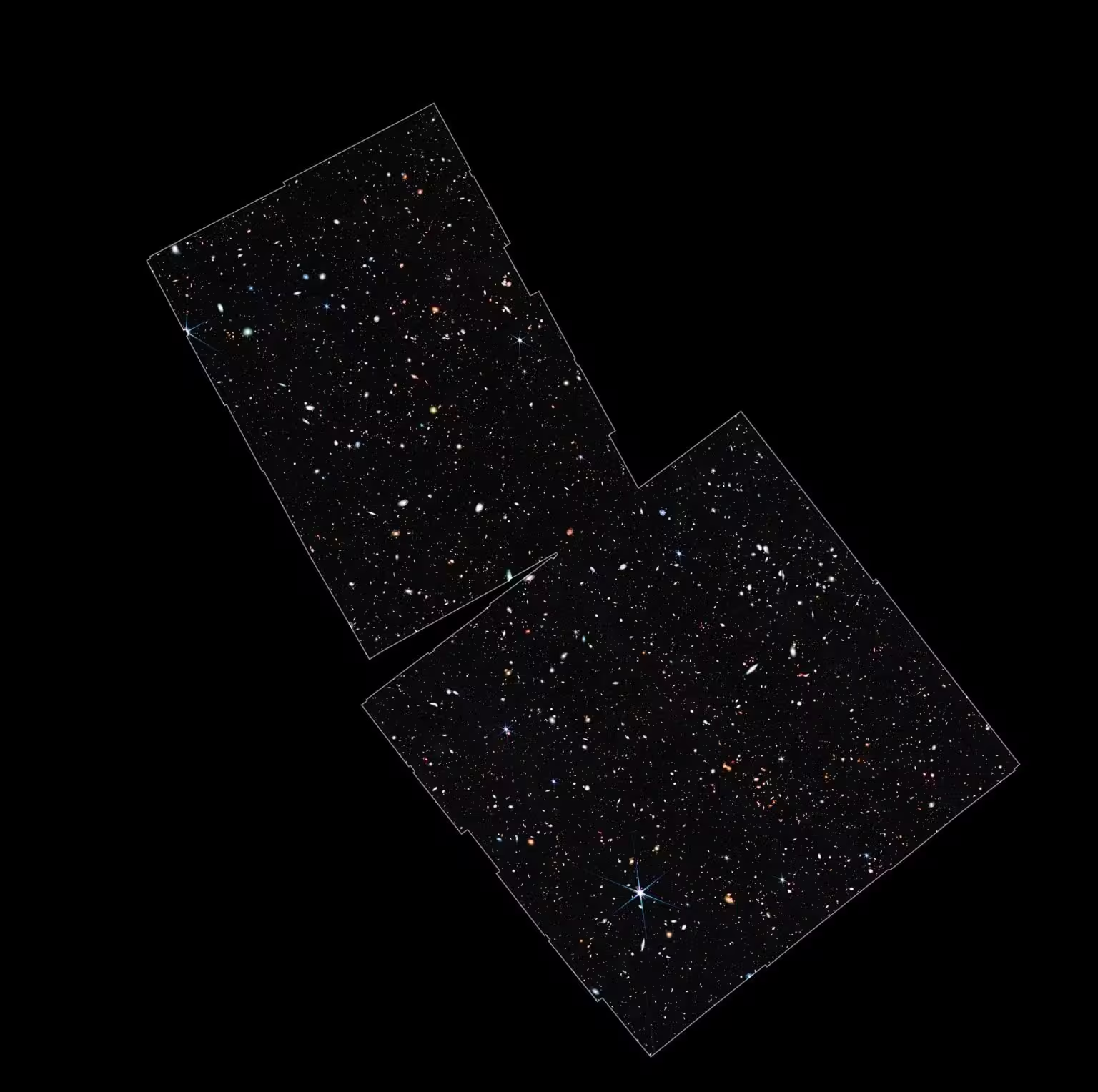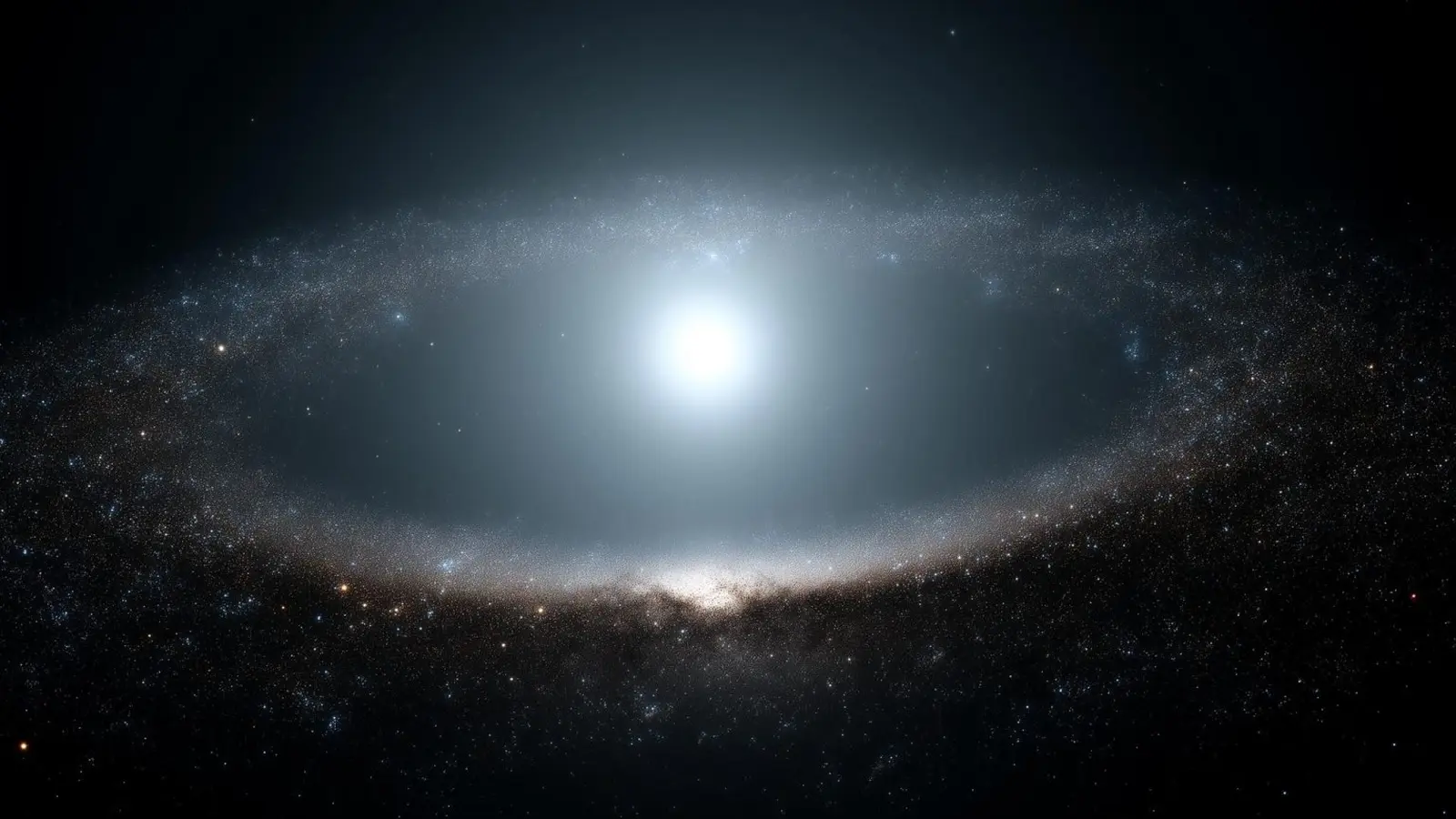8 Minutes
New JWST data point to dark-matter-powered stars
Astronomers analyzing James Webb Space Telescope (JWST) observations have identified four ultra‑distant objects whose spectra and shapes match predictions for supermassive "dark stars" — hypothetical first-generation objects powered not by nuclear fusion but by dark‑matter annihilation. If confirmed, these objects would reshape our understanding of the earliest luminous sources, clarify why JWST finds unusually bright high‑redshift sources, and offer a pathway to the formation of the first supermassive black holes.
What is a dark star?
Dark stars are a theoretical class of primordial, hydrogen‑helium structures sustained against collapse by heat released when dark‑matter particles annihilate in their interiors. Unlike ordinary stars that shine due to nuclear fusion, dark stars would radiate because of the non‑gravitational interactions of dark matter inside them. The concept was first developed in peer‑reviewed work in the late 2000s and refined through subsequent modeling that showed these objects could grow to supermassive sizes — in some scenarios reaching masses of order 10^6 solar masses.
These objects would be extremely luminous and comparatively cool and "puffy" for their mass, producing distinct spectral signatures driven by large envelopes of hydrogen and singly ionized helium. One potential diagnostic is an absorption feature at He II 1640 Å produced in the atmospheres of very massive dark stars; this feature is sometimes called a "smoking gun" in dark‑star models.
Observations, instruments, and the JADES field
The candidates were found in deep JWST surveys led by the JWST Advanced Deep Extragalactic Survey (JADES). Photometry from NIRCam initially flagged several highly redshifted, unusually bright compact sources; follow‑up spectroscopy with JWST's NIRSpec provided higher‑resolution spectra for some of those objects. Independent ALMA observations added submillimeter constraints for at least one candidate.

This image taken by the James Webb Space Telescope highlights the region of study by the JWST Advanced Deep Extragalactic Survey (JADES). This area is in and around the Hubble Space Telescope’s Ultra Deep Field. Credit: NASA, ESA, CSA, and M. Zamani (ESA/Webb). Science: B. Robertson (UCSC), S. Tacchella (Cambridge), E. Curtis-Lake (Hertfordshire), S. Carniani (Scuola Normale Superiore), and the JADES Collaboration.
The dataset that produced the new candidates includes NIRCam photometry, NIRSpec spectra, and ALMA line measurements. Each instrument contributes different, complementary diagnostics: NIRCam maps morphology and broadband colors that suggest very high redshift and compact size; NIRSpec resolves spectral lines and continuum features including possible He II signatures; and ALMA detects millimeter/submillimeter emission lines that track gas content and metal lines such as oxygen.
Candidate objects and spectral evidence
The team led by Cosmin Ilie (Colgate University), working with collaborators including Shafaat Mahmud, Jillian Paulin, and Katherine Freese, focused on four of the most distant objects yet observed: JADES-GS-z14-0, JADES-GS-z14-1, JADES-GS-z13-0, and JADES-GS-z11-0. Two of these were previously identified photometrically; the addition of NIRSpec spectra allowed a closer test of dark‑star models.
- JADES-GS-z14-1 appears unresolved at JWST resolution, consistent with a point source expected for a single, extremely distant supermassive star or starlike object.
- The other three sources are extraordinarily compact but marginally resolved; they can be modeled either as compact, star‑forming galaxies or as supermassive dark stars surrounded by ionized hydrogen and helium nebulae.
Crucially, one object (reported as JADES-GS-z14-0) shows a tentative absorption dip at He II 1640 Å (signal‑to‑noise ~2). While that detection is still tentative, it lines up with theoretical expectations for atmospheres of very massive, dark‑matter‑heated objects. At the same time, ALMA spectroscopy of the same source reveals an oxygen emission line — implying the presence of metals in the local environment. If both features are real, the simplest interpretation is not an isolated primordial dark star but a dark star embedded in a metal‑enriched region, possibly resulting from a merger between a dark‑star‑hosting halo and a more typical early galaxy, or concurrent formation of dark and ordinary stars within the same halo.
From theory to potential discovery
The dark‑star hypothesis was initially framed by theoretical work showing how weakly interacting massive particles (WIMPs) or similar dark‑matter candidates could annihilate within the high dark‑matter densities present in early halos. Energy injected by annihilation would heat collapsing gas and, under the right conditions, prevent collapse into a compact fusion core — instead producing a large, cooler object powered by dark matter annihilation. Subsequent modeling showed two viable growth channels that allow dark stars to accrete material and become supermassive, and suggested they could serve as seeds for early supermassive black holes.
Confirming even a small population of supermassive dark stars would have profound implications: it would provide unique constraints on the particle physics of dark matter, explain why JWST observes more bright, compact high‑redshift sources than expected from conventional galaxy formation models, and offer a natural mechanism for producing massive black‑hole seeds at early times.
Expert Insight
Dr. Elena Vargas, a theoretical astrophysicist (fictional) specializing in early Universe structure formation, comments: "The possibility that some of JWST’s brightest early sources are powered by dark‑matter annihilation is thrilling because it connects cosmology, particle physics, and observational astronomy. The tentative He II 1640 Å absorption is exactly the kind of signature we'd expect for a helium‑rich envelope surrounding a cool, massive object. But the presence of metals in the same systems means we must consider complex environments — mergers or mixed stellar populations — rather than simple, pristine dark stars. Confirming these candidates will require deeper spectroscopy and multiwavelength follow‑up, but the potential payoff is enormous: direct astrophysical evidence about the nature of dark matter and the birth of supermassive black holes."
Implications and next steps
The authors emphasize caution: each object remains consistent with more prosaic interpretations (compact star‑forming galaxies or active galactic nuclei) based on current data. Yet the match between observed spectra/morphology and dark‑star models motivates targeted follow‑up observations:
- Deeper NIRSpec integrations to raise the signal‑to‑noise of the putative He II 1640 Å absorption and search for additional diagnostic lines.
- High‑resolution ALMA observations to map the spatial distribution of molecular gas and metal lines, helping to determine whether metal enrichment is local or widespread.
- JWST mid‑infrared spectroscopy and imaging to constrain nebular emission, dust content, and the presence of multiple stellar components.
If deeper data confirm dark‑star diagnostics, the observed luminosities and inferred masses would allow astrophysicists to estimate properties of the underlying dark‑matter particle (e.g., annihilation cross section, mass range) in ways that complement direct detection and collider searches.
Conclusion
The identification of four JWST sources consistent with supermassive dark‑star models marks an important step from theoretical speculation toward observational testability. While current detections — including a tentative He II 1640 Å absorption feature and ALMA‑detected oxygen emission — are not yet definitive, they establish a clear roadmap for follow‑up studies. Confirming dark stars would open a new observational window onto the particle nature of dark matter and the formation pathways of the earliest supermassive black holes. For now, the JWST discoveries stand as an intriguing possibility that will demand coordinated, multi‑instrument follow‑up in the coming years.
Source: scitechdaily


Leave a Comment